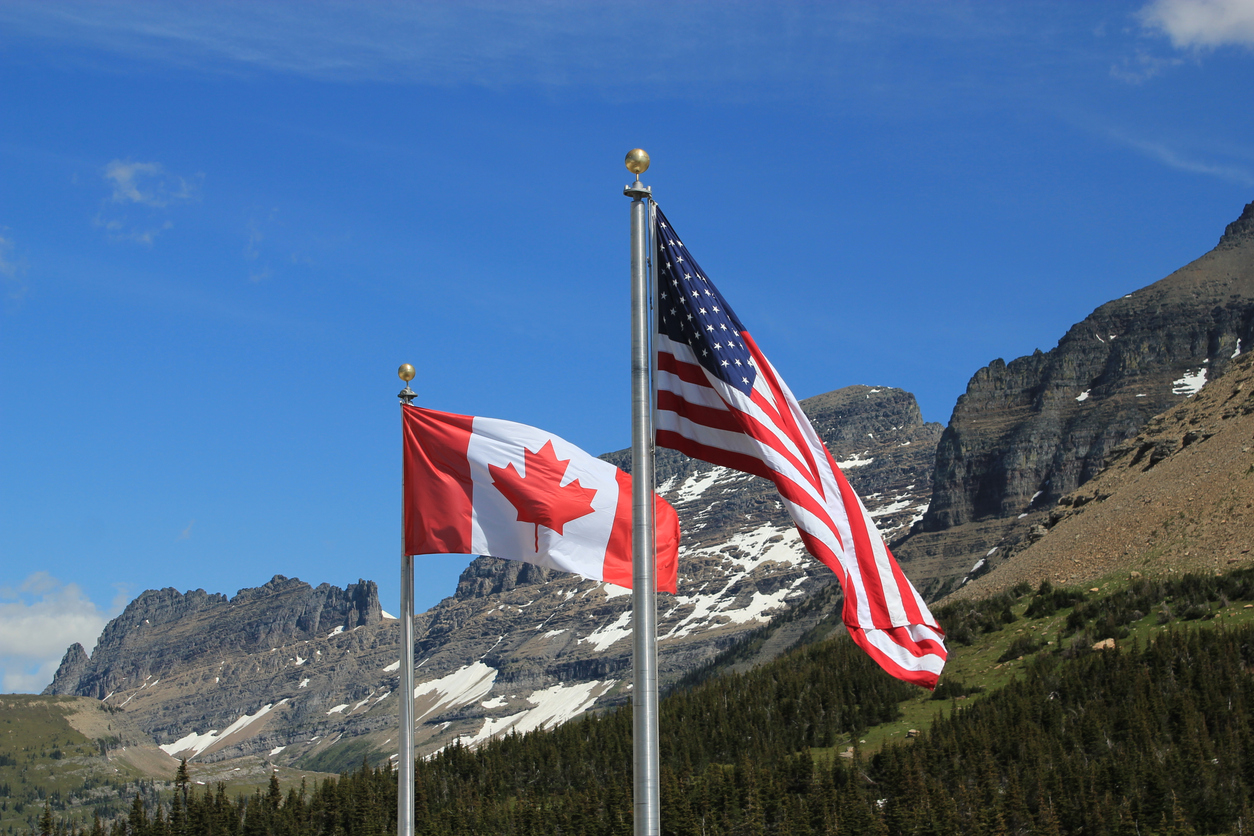
Canada’s trade deficit shrinks in September.
Canada’s trade deficit with the world shrunk from $1.5 billion in August to $1.3 billion in September, according to numbers released on November 5 by Statistics Canada.1 While Canada’s merchandise exports did decrease by 0.1%, this was more than offset by a 0.4% decline in imports.
Canadian Exports Dip Due to Lower Prices
Exports decreased from $64 billion in August to $63.9 billion in September. The decline of just over a tenth of a percentage point marked the third consecutive monthly decrease. September’s slight dip was due to lower prices. In real (or volume) terms, exports actually rose 1.4% on the month. Export volumes were down over 2.5% compared to September of 2023.
Import Decreases Erase Much of August’s Bump
Imports to Canada totalled $65.1 billion in September. That represents a 0.4% drop from August, largely erasing the 0.5% increase experienced in that month. Year over year, imports were down just over a tenth of a percentage point. Imports were essentially unchanged in September in real (or volume) terms.
Canada’s Trade Surplus with US Grows, as Does Trade Deficit with the Rest of the World
Exports to the United States were up by 1.6% in September, with aircraft and unwrought gold responsible for much of the gains. Imports from the US increased by 0.8%. Canada’s trade surplus with the US widened from $7.8 billion in August to $8.3 billion in September.
Meanwhile, exports to the rest of the world dropped by 5.3%, with UK and Switzerland buying less unwrought gold. Imports from countries other than the US fell 2.3%. Our trade deficit with countries other than the United States grew from $9.3 billion in August to $9.6 billion in September.
Industry Breakdown
Farm, fishing and intermediate food products
Exports $5.1 billion, up 2.3%
Imports $2.7 billion, down 0.5%
Basic and industrial chemical, plastic and rubber products
Exports 3.6 billion, down 0.9%
Imports $5 billion, down 0.2%
Forestry products and building and packaging materials
Exports $4 billion, up 5.3%
Imports $2.9 billion, down 2.3%
Industrial machinery, equipment and parts
Exports $4.2 billion, down 0.4%
Imports $7.2 billion, down 3.4%
Electronic and electrical equipment and parts
Exports $2.9 billion, up 1.6%
Imports $7 billion, down 5.6%
Consumer goods
Exports $7.6 billion, down 1.3%
Imports $13.2 billion, up 1.6%
Logistics Industry Outpaces Economy at Large
A growth report released earlier this year by RBC2 shows a Canadian economy that has stalled over the past 5 years. Despite this, CAT President William McKinnon says that the logistics industry continues to show growth.
“Our business is much larger than it was in 2019, and the same is true for our competitors,” he says.3
McKinnon believes that 3PL and warehousing businesses continue to provide value in the form of scalability, flexibility, and technology.
“We give customers the ability to have some variability as their business cycle ebbs and flows ,” says McKinnon. “If companies have their own facility, they are typically committed to fixed labour costs throughout the year. Small enterprises also may not be in a position to spend a million dollars on technology, whereas we’re able to spread that over time and clients and be sophisticated about how we apply it.”
Impact of US Election on Canadian Trade
Today’s trade report happens to be released on the same day as the US General Election. While there are obvious implications for the Canadian economy, McKinnon doesn’t believe that wholesale changes are coming to free trade, regardless of who wins.
“I don’t think it’s going to change a heck of a lot,” he says. “The US isn’t ready for punishing tariffs on a broad scale. How is Walmart going to stock its shelves? It could take 20+ years to get the infrastructure in place for a Made in America solution.”
Hurricanes in Florida Unlikely to Directly Impact Shipping Traffic in Vancouver
Like many of us, McKinnon was saddened to see the destruction visited upon Florida by recent Hurricanes Helene and Milton.
“I was on a call with some partners in Miami and they spoke about the devastation,” he says. “It brought a personal element to the situation.”
Asked whether he thought it would have a direct impact on shipping traffic in Vancouver, he expressed skepticism.
“It’s too far away,” he says. “If something major happened in Los Angeles, it would impact life in Vancouver, because that’s a trade lane for us, but Florida is not.”
Logistics Technology Offers Total Transparency to CAT Clients
In recent years, Canadian Alliance Terminals has been introducing new WMS & TMS technology designed to provide clients with greater transparency and faster movement of their goods, as well as less manual data entry. McKinnon is happy to report that the new systems have all been introduced and that emphasis has moved toward integrating clients.
“There’s no difference between what we see and what our customers see,” he says.
Do customers take advantage of this total visibility?
“I think that initially, our customers look at things in granular detail, but soon realize we run a best in class warehousing operation,” he says. “It’s always there if they want to look at it.”
Cited Sources
1 Government of Canada, Statistics Canada. “Canadian International Merchandise Trade, September 2024.” The Daily – , November 5, 2024. https://www150.statcan.gc.ca/n1/daily-quotidien/241105/dq241105a-eng.htm.
2 Talukder, Shiplu. “Canada’s Growth Challenge: Why the Economy Is Stuck in Neutral.” RBC Thought Leadership, June 5, 2024. https://thoughtleadership.rbc.com/canadas-growth-challenge-why-the-economy-is-stuck-in-neutral/.
3 Direct Communication with William McKinnon
